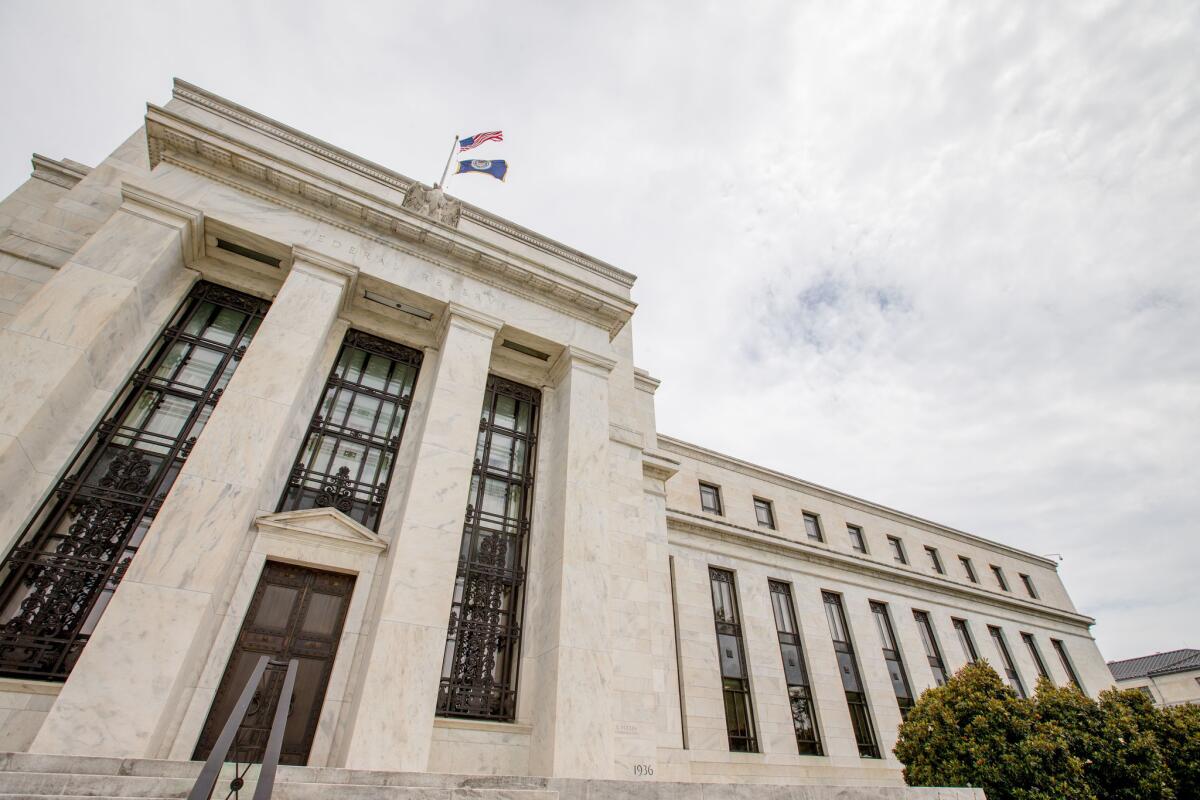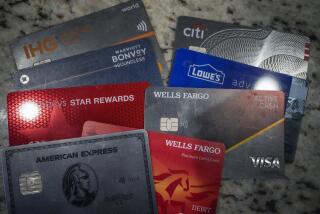Now’s the time to hunt for higher rates on your bank accounts

- Share via
The year 2017 is shaping up as one of rising interest rates. For some people, that will mean loans and credit cards will become costlier. But for some bank and credit union customers, there’s also a benefit: the potential to earn more money.
“If you’re willing to shop around for a higher yield now” on checking and savings accounts, says financial planner Eric Hutchinson, “you get the immediate benefit of earning more money. You’ll also be positioning yourself to take advantage of future rate hikes.”
The Federal Reserve raised its benchmark interest rate for banks from 0.50% to 0.75% in December. Rising rates provide incentives for banks to increase their annual percentage yields on deposit accounts to attract customers, says Hutchinson, who is based in Little Rock, Ark.
That’s no guarantee that a bank will increase annual percentage yields, or APYs. In fact, the national average interest rate on savings accounts is 0.06%, according to the Federal Deposit Insurance Corp. — the same as before the Fed’s December rate hike. But Hutchinson says financial experts believe that rates will gradually increase over the next year.
Suppose you started 2017 with $2,000 in a basics savings account that had an APY of 0.06%. If you left the money untouched for a year, it would earn a meager $1.20 in interest.
But if you put the cash in a savings account with a higher yield — say 1% — you would earn about $20 in interest by the end of the year.
Many people have cash parked in checking or savings accounts that earn next to no interest. Shop around so you’re prepared to take advantage of rising rates.
Here are some tips to score better rates.
Review institutions of all sizes: Large banks are known for convenience and branch access. But many smaller credit unions, banks and online-only institutions beat larger competitors when it comes to interest rates.
Check the websites of nearby banks or credit unions for rates. You can also find more information and reviews about these institutions on comparison sites.
Watch out for monthly fees: The interest rate shouldn’t be the only factor you consider. Many financial institutions require a minimum balance of about $300 to avoid monthly maintenance fees. If you don’t meet the requirement, the fees could add up to more than $140 a year. That would probably erase all of your earnings and then some.
Know your time frame: Financial institutions often offer higher interest rates on certificates of deposit. In exchange, you can’t touch the money for a certain amount of time, usually from three months to five years. Otherwise, you’d be charged an early withdrawal fee, which could erase your earnings.
Read the fine print: Some banks and credit unions have better rates for customers with higher balances, of usually $50,000 or more. If your balance falls below that level, the rate would be much lower. Make sure you’ll have the required amount before opening the account.
Burnette is a staff writer at NerdWallet, a personal finance website.
MORE BUSINESS NEWS
Two men charged in alleged Ponzi scheme for ‘Hamilton’ tickets
American Airlines ditches the seat-back entertainment screen on some planes
California gets closer to requiring cancer warning label on Roundup weed killer
Trump elevates border-tax idea, but also the political and legal challenges
More to Read
Inside the business of entertainment
The Wide Shot brings you news, analysis and insights on everything from streaming wars to production — and what it all means for the future.
You may occasionally receive promotional content from the Los Angeles Times.










